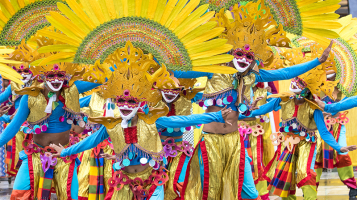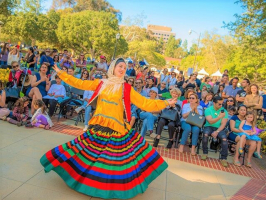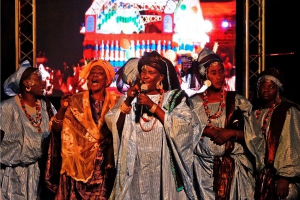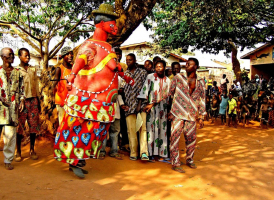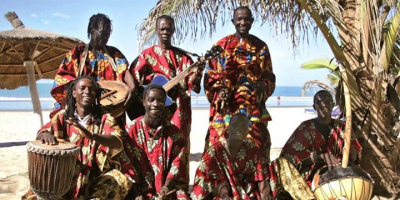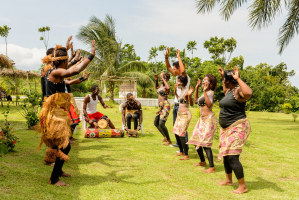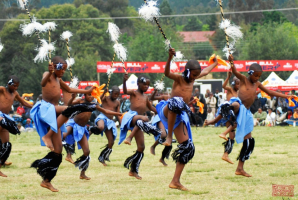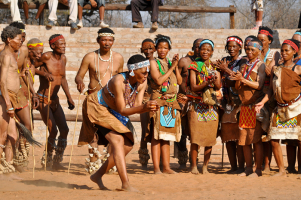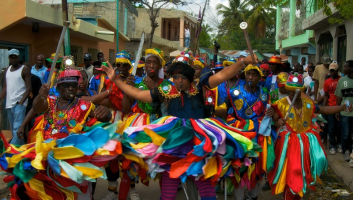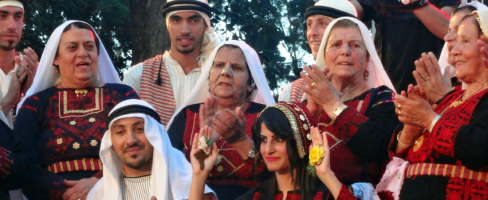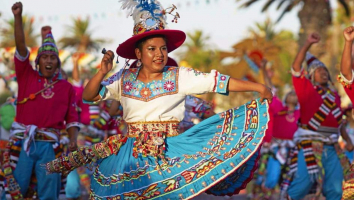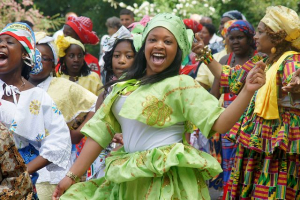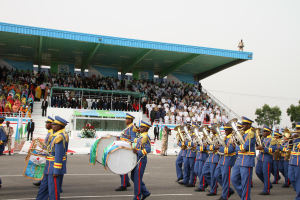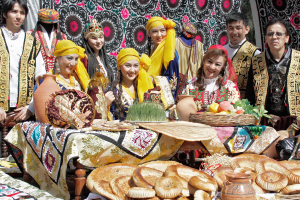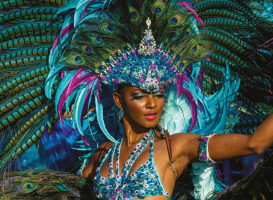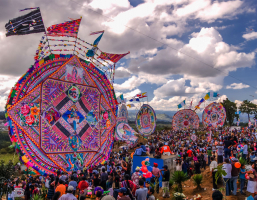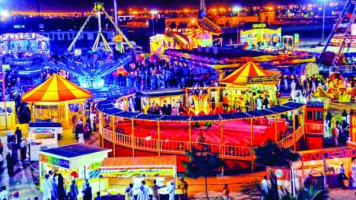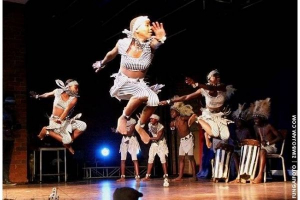Top 10 Most Famous Festivals in Morocco
Morocco is a year-round destination, so determining when to visit can be challenging. One option is to organize your trip around one of the many annual ... read more...festivals and events held throughout the country. Some commemorate Morocco's rich artistic history, while others are inspired by the agricultural calendar, and yet others are religious festivals that provide a honest glimpse into the lives and beliefs of ordinary Moroccans. In this article, we look at the most famous festivals in Morocco.
-
Our list of the most famous festivals in Morocco, of course, cannot overlook a very outstanding representative, Marathon des Sables.
The famed Marathon des Sables, often known as the Toughest Footrace on Earth, is a six-day multi-stage race over the harsh landscapes of the Sahara Desert. Every year, over 1,200 athletes from 30 countries compete, with finishers covering a total distance of 250 kilometers/156 miles. Participants must be self-sufficient, bringing their own food and equipment and sleeping in community tents set up along the route.
With temperatures routinely topping 50oC, those courageous (daft) enough to take park will run, stumble, burn, stink, blister, hallucinate, weep, and bleed the entire distance while carrying all of their racing gear and sustenance. Have you ever dropped a gel and lost it in the sand? On the course, there is no gel station or friendly supporter with jelly babies.
Every night, runners must treat their injuries, eat whatever they've rationed for the day, and then'sleep' in communal tents. Because of the tremendous demand, runners must sign up two years in advance for this complete event and pay roughly £4250 for the privilege.
Where: Sahara Desert
When: Usually in April, check online for confirmed dates.
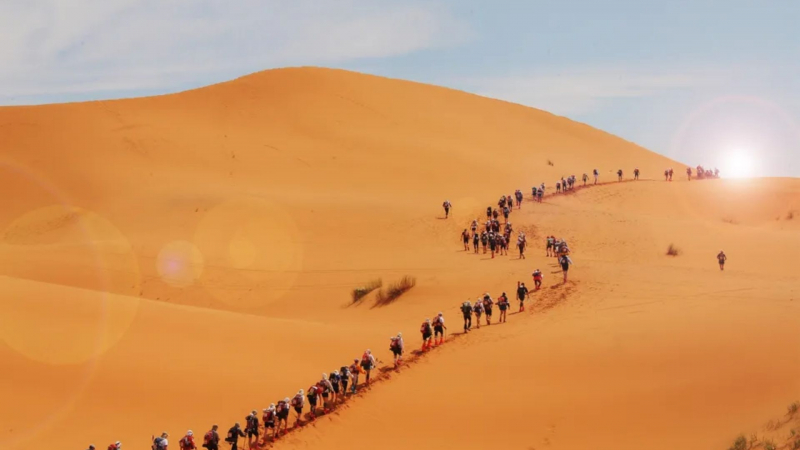
Photo: www.runnersworld.com Video: mayayo oxigeno -
Because of its fragrant rose fields, Morocco's Dades Valley is also known as the Valley of the Roses. Every May, the harvest is celebrated at Kalaat Mgouna, an oasis village with a major rose water distilling factory. This is one of the most famous festivals in Morocco.
The three-day celebration, which begins on a Friday and draws roughly 20,000 people, includes rose parades and shops selling a variety of rose goods. Traditional song and dance, as well as the renowned Miss Roses beauty competition, provide entertainment.
Where: Kalaat Mgouna
When: Mid May, check online for confirmed dates.
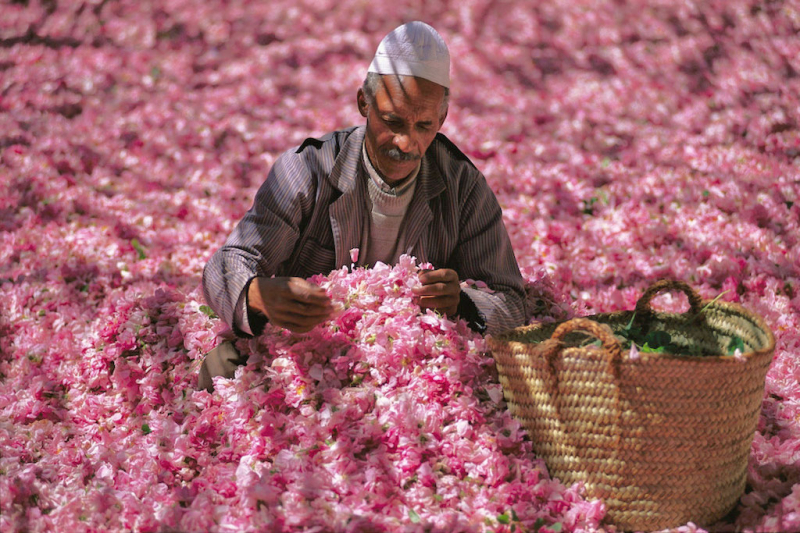
Photo: Lim Kim Keong – LIM KIM KEONG Video: Moroccan Advisor -
Another festival that earns a spot on our list of the most famous festivals is none other than the renowned Fez Festival of World Sacred Music. The Fez Festival of World Sacred Music and its Forum, which were founded in 1994 and 2001, respectively, under the high patronage of His Majesty Mohamed VI, are part of Fez's scholastic, artistic, and spiritual legacy. This event has been gaining in popularity since its start. The Festival was named one of the most remarkable events contributing to the dialogue of civilizations by the United Nations in 2001.
Because of its allure, the Festival has attracted world-renowned artists from all over the world who share a desire for the divine. Some of these celebrities include Joan Baez, Patti Smith, Bjork, Ben Harper, Paco de Lucia, Ravi Shankar, Sabah Fakhri, Kadhem Saher, Mounir Bachir, Asmaa Lamnawwar, Wadi Al Safi, Julia Boutros, Sheikh Yassin Al Tuhami, William Christie, Barbara Hendricks, Jessie Norman, Jordi Saval, Tereza Berganza, etc.
The Festival has had thirteen editions, each with its own set of surprises, because the Festival also flourishes as a nursery, revealing to the public previously undiscovered talents, or as an event that encourages ambitious initiatives, newly born from the imaginations of brave musicians and writers. Since a few years, and at the request of its artistic director, the Festival has also been creating large-scale pluri-disciplinary projects that are displayed at the Festival's opening ceremonies. On stage, ninety artists have occasionally succeeded each other.The Fez Festival of World Sacred Music lasts nine days and features a spectacular lineup of open-air concerts. You never know what you'll witness, from Iranian whirling dervishes to mystics, Sufi chanters, and international dancers. The exquisite Jnan Sbil Gardens and Bab al Makina, the parade ground in front of the Royal Palace, are among the venues. In between concerts, stop by the festival's street booths to experience traditional cuisine and drink.
Where: Fez
When: Usually in June, check online for confirmed dates.
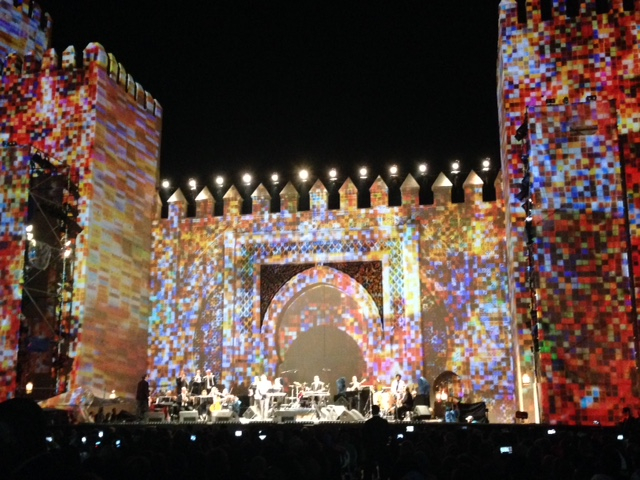
Photo: Morocco World News Video: New China TV -
The Essaouira Gnaoua and World Music Festival comprises musicians from all over the world, but it is primarily a celebration of gnaoua, a distinct genre inspired by Berber, African, and Arabic music, dance, and religious rites.
The event first took place in 1997. Visitors are treated to four days of events and music staged at up to ten distinct open-air locations scattered across Essaouira's medieval medina, one of Morocco's most beautiful coastal cities.
Where: Essaouira
When: Usually in June, check online for confirmed dates.
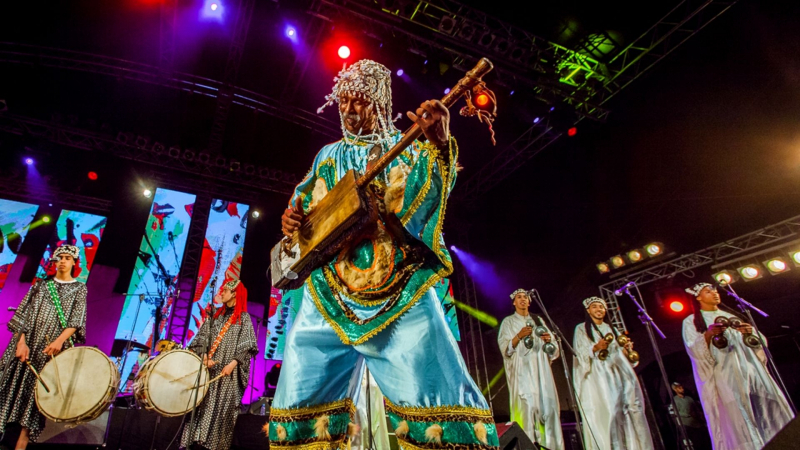
Photo: www.festival-gnaoua.net Photo: GnaouaFestival -
It's difficult to imagine Marrakech becoming more frantic, lively, and notable than it currently is on any given day of the year. Street vendors, inhabitants, visitors, shops, stores, and attractions abound in this Moroccan metropolis. Tourists frequently escape the hustle and bustle of city life by visiting quieter attractions such as the gardens of the Saadian Tombs or the serene lawns of the Majorelle gardens. However, the city hosts the Marrakech Popular Arts Festival every year, either in June or July (depending on the organizers).
The Marrakech Popular Arts Festival draws entertainers, artists, and visitors from all over the world, including Ukraine, Poland, China, and Spain. It has become a festival recognized for its amazing array of fire-swallowers, fortune-tellers, story-tellers, singers, snake charmers, dancers, acrobats, craftspeople, trick horse riders, theater artists, and musicians. To accommodate all of these performers and events, ancient sites like the El Badi Palace ruins must give up their serene, desolate seclusion for a few enjoyable days. The grounds of the El Badi Palace are vast and provide visitors with a sense of the palace's former great and luxurious history. The crimson walls and foundation are all that remain of El Monsour's once-grand palace, which he built in the sixteenth century. El Monsour built this once-grand mansion in the sixteenth century, and all that remains are the crimson walls and foundation. Unfortunately, Moulay Ismael demolished the palace, leaving only a little portion of the building's history behind. The majority of the festival's events take place in El Badi, with some of the largest events taking place in Djemaa el Fna, the city's main square.
The Popular Arts Festival, which blends modern entertainment with historic folkdances, traditional Berber musicians, and the magic of belly dancers, is one of Marrakech's most popular attractions. It brings all of Morocco's regions together in one event, with the cultures of all of the different regions blending to create a visual and sensory explosion of sound, color, and rhythm. When planning your trip to Marrakech, don't forget to include this wonderful event in your itinerary. Visitors should not miss this event and artistic festival adventure!
Where: Marrakesh
When: Usually in July, check online for confirmed dates.
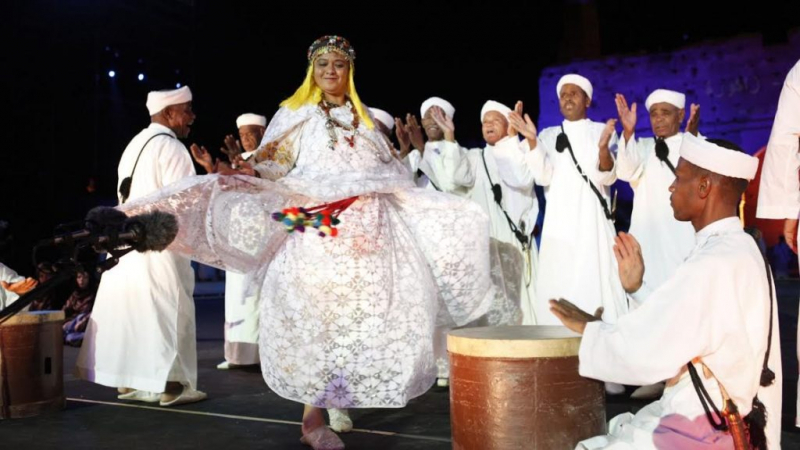
Photo: Morocco World News Video: AlArabiya العربية -
Imilchil is a town located high in the Atlas Mountains in Morocco's desert area. Life is difficult here, and residents have been raised with a strong sense of culture and tradition. Because the road leading to this barren Moroccan village is lengthy, rough, and nearly impassable, few outsiders visit. Residents from the nearby villages, on the other hand, travel to Imilchil each September to enjoy the Imilchil Festival, also known as September Romance.
The Imilchil Festival is a wedding festival, however it is not a wedding venue, and no weddings take place during this time. It's a Moroccan tradition that honors the love, heartbreak, and tragedy that befell two lovers many years ago. Legend has it that the couple were from two Berber tribes in the Atlas Mountains. As expected, their parents disapproved of their relationship and banned them from marrying. Tislet and Isli, torn between their families and the prospect of spending the rest of their lives apart, decided to commit suicide by drowning in one of the surrounding lakes. They were unable to unite in death since the mountain that separates the two lakes also divides their spirits, leaving them to crave for each other in death as they had in life. Following this incident, families from several tribes agreed that both men and women would be entitled to choose their own life partner.
But the question remains: why would anyone travel to this remote area to attend the Imilchil Festival? Sidi Mohammed El Maghani, on the other hand, is buried here. He is Ait Haddidou's patron saint, and it is thought that any union blessed by El Maghani will be prosperous and long-lasting. The celebration is held to bring together young men and women from diverse tribes. Couples can also become engaged at the festival and afterwards marry at a wedding site of their choice. It's a happy occasion marked by lively music, lavish feasts, singing, dancing, and, of course, a little flirtation. Men looking for a bride are plainly seen in their white dress, and women available for marriage and seeking a husband are dressed in traditional costume.
For many years, this magnificent wedding festival was a closed event, with only family members of the honored tribes permitted to attend. However, as tourism and interest in diverse cultures and traditions grew, even this small Moroccan event had to start accommodating visitors. Despite the fact that the majority of tourists and visitors to the festival strive to blend in and not disrupt the festivities, many dads of future brides believe their daughters are in danger and do not approve of the visits. Those who have the opportunity to attend the Imilchil Festival should consider themselves fortunate and respect all of the festival's rituals and customs.
Where: Imilchil
When: Usually in September, check online for confirmed dates.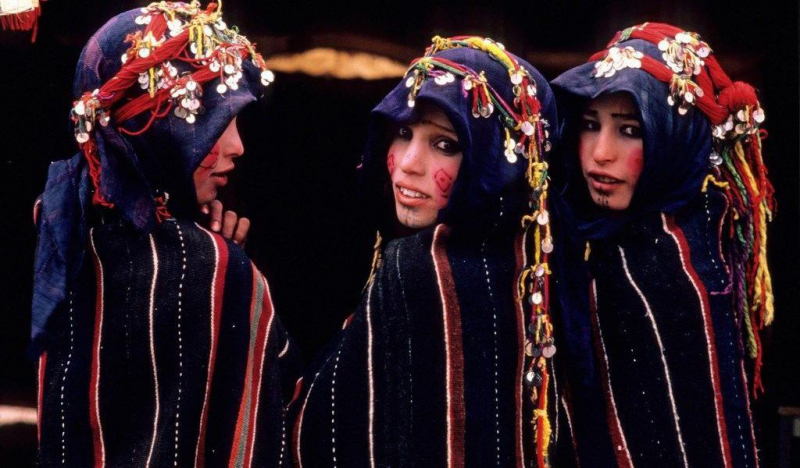
Photo: Atlas Trekking Morocco Video: TRACKS -
Every year, the holy Muslim month of Ramadan falls in May or June (the exact dates change). In 2020, Ramadan begins on April 24 and ends on May 23 with Eid-ul-Fitr.
Muslims fast from sunrise to sunset every day during Ramadan. The streets of traditional regions come alive in the evenings with delicious aromas of delights to satiate the hungry. The most important part of the day is the dinner, known as iftar. People go all out to celebrate it by cooking delectable food that spills out into the streets. It's a 24-hour affair, sehar, because devotees also come out for the morning meal. Around an hour and a half before daybreak, the call to morning prayer is made.
Ramadan is a sober month in Morocco, as it is a time to purify the soul, refocus attention on God, and practice self-sacrifice. The end of the fast, however, is marked by the Eid al-Fitr feast, which lasts many days. The festival is centered on prayer and family, with plenty of food.
Where: Throughout Morocco
When: Changes according to the Islamic calendar, check online for confirmed dates.
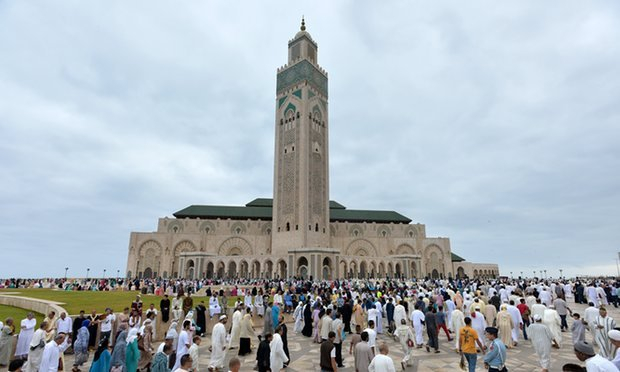
Photo: Morocco World News Video: Lotfi Tiken -
The Erfoud Date Festival is held in early October for three days (depending on the crop) and is a great destination to stop on a Morocco Private Tour. Erfoud is a small oasis village located 6 hours east of Ouarzazate in the Moroccan Sahara desert. It's a calm little town with red buildings surrounded by magnificent scenery and date trees that stretch from Er Rachidia to Rissani in the north to form Morocco's largest palm forest.
The village comes alive each October when the dates are harvested for the annual Date Festival celebrations. With about a million date palms, Erfoud sits at the heart of the date-producing region. The festivities are accompanied by traditional music, dance, and processions, and it is an opportunity for tourists to sample the local festival food, particularly dates, and enjoy the fun of the three-day celebrations, which include a fashion parade through the streets and the crowning of the "Date Queen." A thrilling dromedary race is also held.
Official tents for firms and cooperatives to promote their dates or date-related items are set up on the first day, with an official Governmental opening. Moroccan dates come in a hundred various types, with 45 of them growing in the south of the country alone.
During the date festival, travelers can stay in a variety of hotels in Erfoud. It is critical to make reservations well in advance. The Kasbah hotel, Chez Tonton, Auberge Derkoua Chez Michel, and the Belere hotel, to name a few, are among them.Iftar, the first meal after the fast, includes dates, milk, and a bowl of harira soup. Dates are also immensely significant in Islam, with the date palm being referred to as the "tree of life" in the Genesis story. They're also crucial to the local and national economies. Morocco exports almost 90,000 tons of dates each year, thus the event allows people to express gratitude for the harvest and pray for a successful crop the following year.
Where: Erfoud
When: October, check online for confirmed dates.
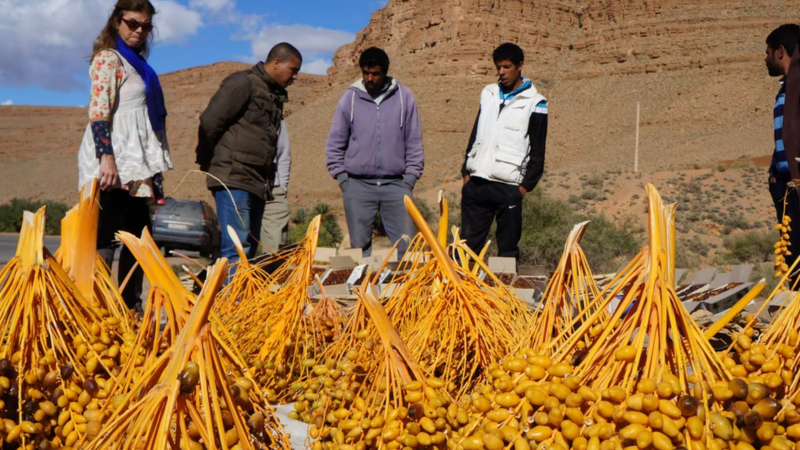
Photo: AFAR Magazine Video: Top View Media -
Another festival in our list of the most famous festivals in Morocco that you should not miss is Eid al-Adha. This also is a celebration for Muslims.
Eid al-Adha is a Muslim festival that commemorates the completion of the yearly pilgrimage to Mecca. It remembers the tribulations of Abraham, who was ordered by Allah to sacrifice his only son. On Eid al-Adha, Moroccan Muslims slaughter an animal, generally a sheep or goat, to mark this act of faith. Much of the meat from the sacrifice is given to others as a metaphor of giving something valuable to oneself away.
Where: Throughout Morocco
When: Changes according to the Islamic calendar, check online for confirmed dates.
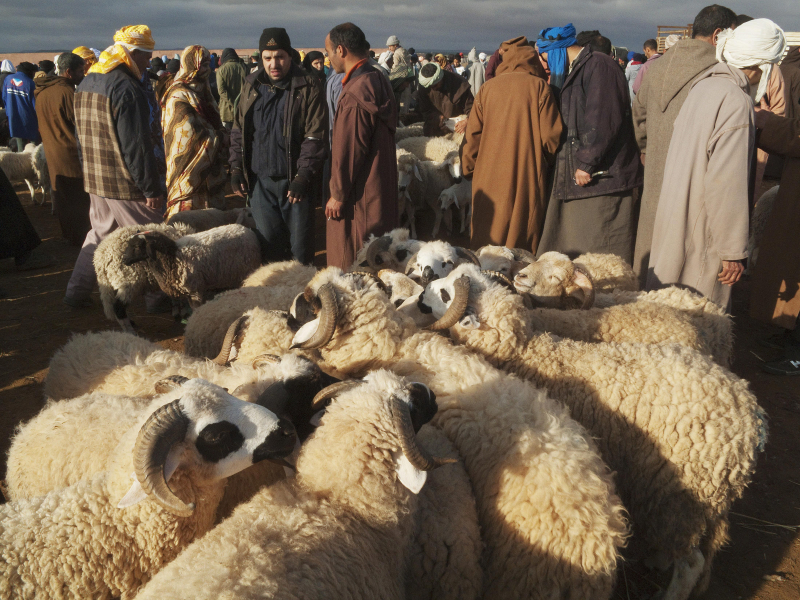
Photo: The Spruce Eats Video: Lonely Planet -
The Islamic New Year is observed by the majority of Moroccans, and the date varies according to the lunar Islamic calendar. The Amazigh New Year, or Idd n Yennayer as it is known locally, commemorates the start of the crop year by marking the eve of the first day of the agricultural calendar year, which has been utilized by Amazigh throughout North Africa from ancient times.
Both Arab and Berber speaking populations commemorate Yennayer under various names. This traditional festival was referred to as "Haguza" or "Aam Alfilahi" by some Arab speaking communities in historic cities (the Agrarian year). The Amazigh population, particularly those living in the south east of Morocco, refers to the event as "Id Suggas" (the night of the year).
Amazigh groups are urging the Moroccan government to declare Yennayer a national holiday. People all throughout Morocco cook a variety of delectable delicacies to commemorate the occasion. Some people make "Irkmen," a soup made of wheat and dried fava beans. Others serve "Tagola," a dish made from cooked maize kernels combined with butter and served with ghee. Couscous with seven veggies, on the other hand, remains the opulent meal to offer on that particular night.Amazigh people have traditionally offered couscous with a date seed or a sliver of nut in it during the night of celebration. The key to a chamber dedicated for storing the family's food is given to the person who discovers this seed of dates or chunk of almonds, and that individual is said to be "blessed" throughout the year.
Where: Throughout Morocco
When: December 31
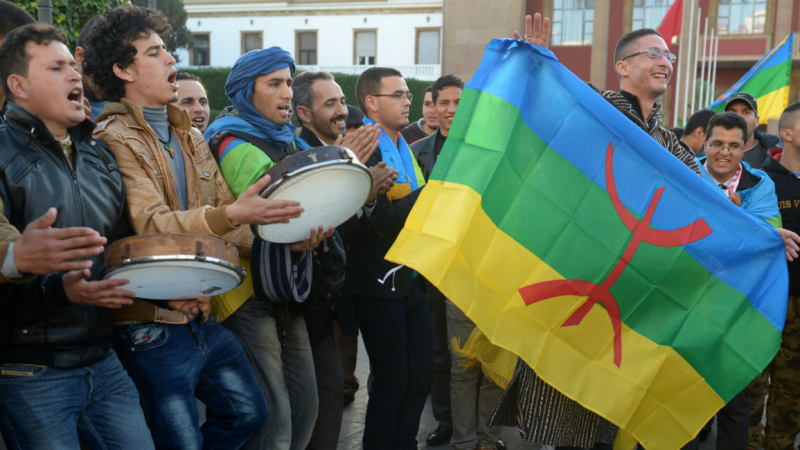
Photo: The New Arab Video: AP Archive












